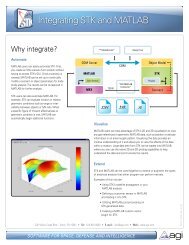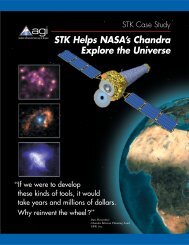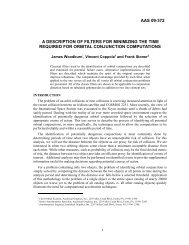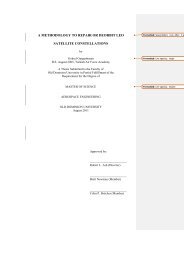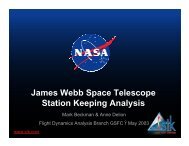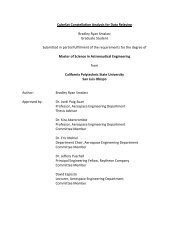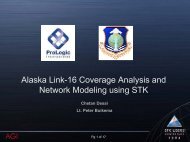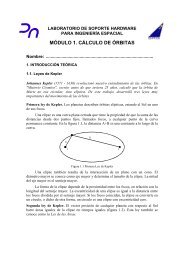SPACE WEATHER - AGI
SPACE WEATHER - AGI
SPACE WEATHER - AGI
- No tags were found...
Create successful ePaper yourself
Turn your PDF publications into a flip-book with our unique Google optimized e-Paper software.
Section II: Radiation Effects© SSS Educational Series 20121% of the galactic cosmic ray spectrum is composed of high-energy heavy ions.Heavy ions deposit more energy per unit depth in a material than protons [2]. Fromthe point of view of space systems it is particles in the energy range 1-20 GeV pernucleon which have most influence, because it is hard to shield against them and it isnot possible to predict a coming impact. An important quantity is the rigidity of acosmic ray which measures its resistance to bending in a magnetic field and isdefined as the momentum-to-charge ratio for which typical units are GV. Theinfluence of Space Weather is to provide a modulation in antiphase with the sunspotcycle and with a phase lag which is dependent on energy [5], for more please see Ref[2].2.3 Solar ParticlesIn the years around solar maximum the sun is an additional sporadic source of lowerenergy particles accelerated during certain solar flares and in the subsequent coronalmass ejections. These solar particle events last for several days at a time andcomprise both protons and heavier ions with variable composition from event toevent. Energies typically range up to several hundred MeV and have most influenceon high inclination or high altitude systems. Occasional events produce particles ofseveral GeV in energy and these can reach equatorial latitudes [5].Solar proton models include:• The King model [28]• The Jet Propulsion Laboratory (JPL) model [29]• The Rosenqvist et al. model [30]• The Emission of Solar Protons (ESP) model [31]For solar heavy ions, the PSYCHIC model (Prediction of Solar Particle Yields forCharacterising Integrated Circuits) is available.2.4. Atmospheric SecondariesThe primary cosmic rays interact with air nuclei to generate a cascade of secondaryparticles comprising protons, neutrons, mesons, electrons, photons and nuclearfragments. The intensity of radiation builds up to a maximum at 60 000 feet (thePfotzer maximum) and then slowly drops off to sea level. At normal aircraft cruisingaltitudes the radiation is several hundred times the ground level intensity and at60 000 feet a factor three higher again. Solar particles are less penetrating and only afew events in each cycle can reach aircraft altitudes or ground level [5].10



